One of the very first things to teach your new puppy or dog is her name.
While it may seem like she should know her name because, well, it’s her name, name recognition actually takes some training.
Don’t worry though; it’s a fun and simple process!
We’ll explain how to teach your dog her name and guide you through the steps to help you avoid potential pitfalls. This way, your pup will respond every time you say her name.
A dog’s “sense of self” is pretty different from the one people have. And while your pooch can certainly learn her name, it doesn’t mean the same thing to her that it does to you.
Instead, your dog will learn that the word you use as her name really just means “look at me!” or “come here!”
How to Teach Your Dog Her Name

To teach your dog her name, you’ll need a few basic supplies. Get these items organized before you start the training process.
- High-value treats: Use pea-sized high-value treats that are tastier than her regular kibble.
- Treat pouch: A treat pouch allows you to keep treats at the ready without stinking up your pockets.
- Treat jars: Fill the jars with treats and set them in areas around the home that are easy for you to access, but out of reach of your dog.
- Clicker (optional): Clickers are helpful for providing immediate positive reinforcement when your dog does something you like. But you can just use a word (“yes!”) instead if you prefer.
Step #1: Set Up Your Training Space
To start, it is important to get your training space set up correctly. This will make it easier to catch and keep your pup’s attention.

This means you want to minimize distractions so your dog can be more focused on her training.
So, take it upon yourself to pick up toys or bones, ask family members to hang out in another room, or put other pets away.
You may even need to draw the curtains if there are cats, squirrels, or kiddos running around outside.
If your dog is easily distracted, start her name training in a small space, rather than a large room where she can wander around.
Alternatively, if you don’t have any other option than to train her in a large room, you can just keep her on a leash or use an x-pen to make the working space smaller.
Step #2: Create a Positive Association With Her Name

Once you have a distraction-free location set up, your next step is to introduce your dog to her name in a positive way.
From your pupper’s perspective, her name is just a word. It doesn’t inherently have meaning.
But by pairing her name with yummy food, she will form a positive association and be motivated to come when she hears it.
- Have some treats ready to go, either in your treat pouch or in a jar next to you. Keep your hands in a neutral position, such as behind your back or against your sides.
- Say your dog’s name in a happy tone of voice. As soon as you finish saying her name, reach for a treat and feed it to her. She doesn’t need to look at you when you say her name to get the treat at this stage. Just say her name, then feed her a treat.
- Repeat these steps 10 to 15 times per session. Practice these sessions three to five times per day.
Your tone of voice can make a big difference when teaching your dog her name.
Use an upbeat, higher-pitched tone, and avoid sounding flat or stern. A happy voice is naturally appealing to canines, as supported by this 2023 study published in the journal Animals.
Keep practicing this step until you see signs of responsiveness when you say her name. When you notice that she looks at you or perks up upon hearing her name, move on to the next step.
Step #3: Add Some Distance

In step #2, your dog was right in front of you when you said her name.
Now it’s time to add some distance between you and her so that she learns to orient toward you and come when you call.
We don’t want to add too much distance at this point – just enough to increase the difficulty a bit.
- Toss a treat about three feet away. It helps to show her the treat first, say “get it” and then slowly toss it away so she can visually track it.
- As soon as she finishes eating the treat, say her name. Remember to use a cheerful tone.
- When you see her turn toward you after hearing her name, click your clicker or say “yes.” Then, give her a treat.
- Once she’s orienting to you immediately upon hearing her name, increase the distance of the tossed treat to 5 or 10 feet away. Say her name as soon as she’s eaten the treat from the ground.
- Rather than clicking the clicker or saying “yes” and giving her the treat as soon as she turns to you, wait for her to move toward you before rewarding her. The idea is to reinforce her coming to you, rather than just turning to you. If she needs a little help, you can take a couple of steps backward, pat your leg, or make a kissy sound to encourage her to approach you. Practice 5 to 10 repetitions per session, at least two or three times a day.
Once your dog is getting the hang of things, keep the treat in your pouch or jar, or hold it behind your back until she’s come over after hearing her name, rather than holding the treat out in front of her to coax her to you.
Showing her the treat will make her dependent on seeing the reward, rather than responding to the sound of her name. Bring the treat out once she’s come over.
Step #4: Make Training Like Real Life

In this step, we will transition from training setups with the tossed treats to using your pup’s name in real-life contexts. The key is to start with easy distractions and gradually work toward more difficult ones.
- Get set up. This means having your treat pouch on or standing near a treat jar.
- Look for a moment where your dog is nearby, but not looking at you. She might simply be standing a few feet away looking away from you.
- Call her name in an upbeat tone of voice. Ideally, she will begin moving toward you right away, but if she needs some extra support, you can take a few steps backward, make a kissy sound, or pat your leg.
- When she gets to you, click the clicker or say “yes.” Then, hand her a treat from your pouch or a jar.
While in previous steps, you practiced multiple repetitions in a row, this step is best done in a “one and done” fashion. This is because after you reward your doggo, she will likely be very attentive, making it difficult to immediately practice another repetition where she isn’t already looking at you.
Instead, you’ll have to practice again later.
Just wait for another moment when she is slightly distracted and not looking at you to practice calling her name again. This keeps it spontaneous for your pup, which is useful since real life is unpredictable.
Practice these one-off name calls 5 to 10 times a day.
Step #5: Add Even More Distance
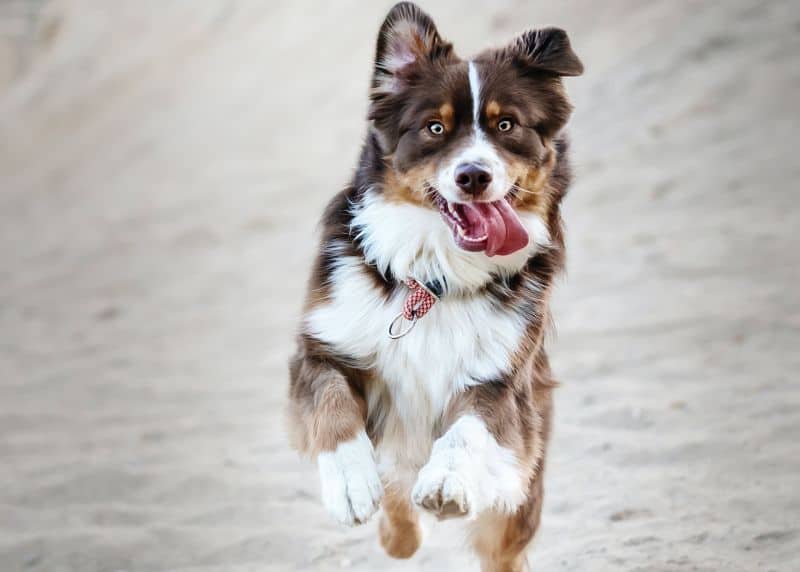
Now that your pup is getting the hang of things, it’s time to add even more distance when you call her name. This step is important, as you often need to call her when she’s not right in front of you or within eyeshot.
Essentially, you’re going to employ the same technique that you’ve been using so far: Call her name when she’s not looking, say “yes!” (or click your clicker), and then dole out a treat when she comes to you.
You’re just going to start increasing the distance between you both while doing so.
Be sure to keep the distraction level low, since adding distance and increasing the distractions all at once will be too tough for her at this point (we’ll do that soon though).
Here are some examples of appropriate distances you’ll want to try with your name recognition training at this point:
- Your dog is across the room.
- Your dog is in another room.
- Your dog is around the corner and out of sight.
- Your dog is at the opposite end of the hallway.
Step #6: Add in Distractions

Often, you need your dog’s attention or you want her to come over when there are distractions in the environment. It can feel really frustrating when you call her name and she blows you off because she’s distracted.
This step will strengthen your pup’s skills by adding distractions so she can listen in all sorts of situations.
Start by incorporating distractions indoors. Create a list of things your pooch finds distracting, arranged from easiest (least distracting) to hardest (most distracting).
Every dog’s list will be unique, but here’s a list of ideas to get your brain going:
- A toy dropped on the ground
- A family member holding or wiggling a toy
- A family member or friend giving her attention
- A secure container of kibble or treats placed on the floor
- A loaded snuffle or licky mat
- Playing fetch or flirt pole with a family member or friend
- A piece of trash on the floor
Start with the easiest distractions you can come up with. When your dog looks at or engages with the distraction, call her name from a short distance. Be ready to reward her with a delicious treat when she comes to you!

Gradually increase the difficulty of the distractions, rewarding her every time for responding to her name.
Once she’s reliably responding to her name and coming when called inside, it’s time to take your name recognition training outside!
You may have noticed that until now, the training steps have been inside your home. This is because most dogs find the outdoors far more distracting than indoors.
Simply stepping outside your door opens up a whole new world of smells, sights, and sounds.
Go back and start at step #1 when you go outside.
While it may feel redundant to repeat the same steps, your furry friend now has to tune out lots of environmental distractions to listen to you. Reviewing earlier stages will help her be successful with her name outside.
Start in lower-distraction situations outside, and gradually work toward high-distraction settings. Just like you did for indoor distractions, make a list of things, situations, and locations from easiest to hardest for your pup.
For example, if you know your dog struggles to focus in your backyard when the neighbor’s dog is also out, wait until he’s inside before going out to train. If you want to practice at the park, stay at a distance from the playground if your doggo finds kids distracting, or visit at a time it won’t be busy.
Step #7: Put It All Together

At this point, you can combine distance and distractions when you call your dog. It can be very hard for her to listen to her name when she’s at a distance and distracted.
You can set her up for success by combining these two aspects strategically.
Basically, that means if she’s far away from you, keep the distraction easy to moderate in difficulty. Conversely, if there’s a tough distraction around, keep the distance shorter.
For example, your dog could be upstairs and barking at another dog out the window, while you’re downstairs. This would be a pretty difficult situation, as it involves both a lot of distance and a tough distraction.
So, while you may need to reduce the distance initially, by going upstairs or standing at the bottom of the steps.
You could also practice calling her from downstairs when you know she’s looking out the upstairs window but not barking.
To aid in your distance training outdoors, consider a long leash; these come in lengths of 15 to 100 feet and allow you to work on name recognition while keeping her safe.
With consistent practice, you can work toward calling her when she’s both at a long distance and highly distracted. It takes time to achieve this level of reliability with name recognition, so build up to it slowly.
At this point, we’re starting to lean more into the practice of teaching your dog to come when called with a recall than simple name recognition.
When teaching your dog her name, you don’t need to be super strict about always getting a response. But, if you’re working on a recall (aka teaching your dog to come when called), you’ll want to be a lot more methodical about your recall word and how often you use it.
How to Pick Your Dog’s Name
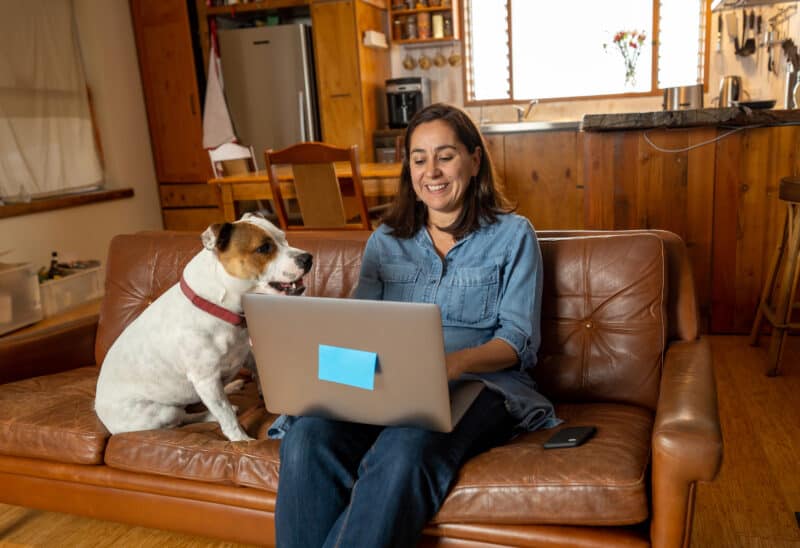
What you name your dog is kind of a big deal, after all, you’ll be saying it multiple times a day for years to come. If you’re struggling to find a name you love that suits your four-footer, here is some canine name inspiration:
- Personality traits: Is your pup sweet? What about a candy-inspired name like Kit Kat or Skittles? Or, if she’s a sassy spicy girl, how about Pepper or Valentina? Use her personality as a starting point for the perfect moniker.
- Appearance: Maybe she’s got a beautiful black coat, so Onyx or Raven seems fitting. Or perhaps she’s got some adorable spots so Freckles or Dottie captures her cuteness. A name sparked by her appearance might embody her essence.
- Your interests or hobbies: If you’re an outdoorsy type, consider names inspired by nature like Meadow or River. If you’re an avid reader, what about a literary dog name from a beloved novel or favorite author?
You’ll also want to consider some practicalities when picking your dog’s name. Some thoughtfulness during the selection process can save you some unforeseen troubles in the future.
- Consider nicknames. When I got my whippet puppy, I loved the name Huckleberry, Huck for short. But I realized that my neighbors might think I was saying another four-letter word when I called out “Huck!” Think about any obvious nicknames that might be off putting before you go all in on a name.
- Keep associations in mind. Names have power and can influence how people act toward your dog. A name like Popcorn is lighthearted and likely to prompt people to smile and act friendly, while a name like Nightmare might trigger people to be wary.
- Test it out. If you like a name, say it out loud. Do you like the way it sounds? Will you feel comfortable saying it in public? Write it down. Will you like how the name looks on an ID tag or water bowl?
Ultimately, what you name your companion is a personal decision. There are no special names that dogs magically respond to, so once you’ve made your pick, it’s all about teaching her the name through the training steps above.
The Dos and Don’ts of Teaching Your Dog Her Name
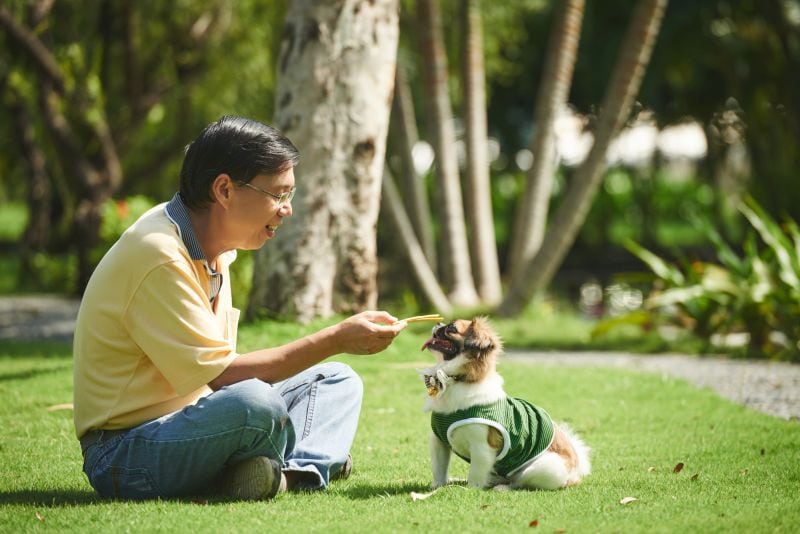
Teaching your dog her name is a pretty simple process, but there are some important considerations as well as some common pitfalls to avoid. Whether you have a brand new puppy or dog, or you’ve had your companion for a while but feel that they need some remedial name training, these pointers apply.
Do These Things When Teaching Your Dog Her Name
Keep these five tips in mind when teaching your pupper her name to help you see the best results.
- Do say her name in a happy tone of voice. An upbeat, cheerful voice will help elicit a quick, enthusiastic response from your dog. Even if you’re feeling frustrated with her, do your best to say her name in a positive manner, rather than sounding stern.
- Do use yummy treats. Break out the good stuff to teach your doggo her name. Treats that are tastier than her regular meals will make the training process faster and more efficient. It can help to use a variety of enticing treats to keep the training interesting for your pup.
- Do practice consistently. Regular practice will help your dog love the sound of her name. Short 1- to 2-minute sessions and one-off repetitions every day will help your pup progress toward reliably responding to her name.
- Do use her name thoughtfully. For instance, if you’re at the beginning stages of teaching your pooch her name, she may not be able to respond when she’s having a playdate with her doggy friend in the yard. Try to match your expectations with her level of experience with her name.
- Do gradually increase the challenge level. While you don’t want to ask for more than she’s capable of, you do want to slowly increase the difficulty of the situations in which you use her name. This will strengthen her name recognition so that she readily reacts even at a distance or with distractions.
Don’t Do These Things When Teaching Your Dog Her Name
Avoid these common mistakes that owners make when trying to teach a dog her name. These missteps can slow down or even stall the training process.
- Don’t use her name in unpleasant situations. For example, if you call her over to trim her nails, but she isn’t fond of a pedicure, she may develop a negative association with her name. This can make her hesitant to respond because it may result in something bad. It’s better to go get her rather than use her name.
- Don’t rush through the initial training steps. While the first several steps may seem very simple, they’re the key to success in the later stages. If you jump to trying to call your dog when she’s distracted without building a solid foundation with her name, she’s unlikely to listen.
- Don’t call her name if you’re not confident she will respond. If you think your pup might ignore you, use a different way of getting her attention, such as a kissy sound or “pup pup pup!”. Repeatedly using her name in situations that are currently too hard for her only teaches her to blow you off.
- Don’t repeat her name. Saying your pooch’s name over and over in an attempt to get a response only waters down the power of her name. The goal is for her to look at you the first time you say it. If she doesn’t respond the first time, it likely means the situation is too hard for her, and more training is needed.
- Don’t ask her to sit before giving her the treat. Avoid asking her to sit or do anything else before you reward her after you call her name. Give her the treat for responding to her name, rather than expecting her to do more.
Use Games to Help Your Dog Learn Her Name
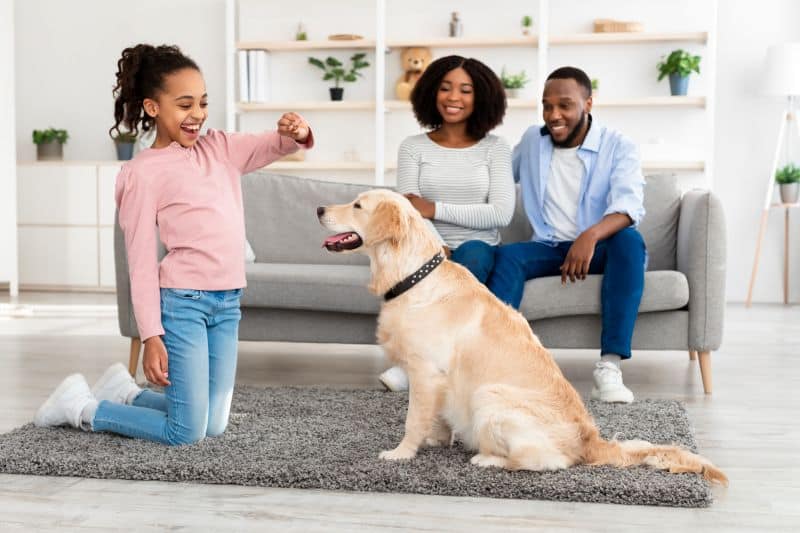
Playing name games can help inject some fun and energy into your dog’s name recognition. After all, you want your dog to respond eagerly when she hears her name, not begrudgingly.
Puppy Ping Pong
If you’ve got a helper or two, this is the perfect activity to put some pep in your pup’s step. Play this game with people your dog trusts. If you’ve got a shy dog, be mindful of who you ask to play.
- Each person needs a few tasty treats. Hold the treats behind your back until it’s time to reward your dog.
- Begin about 5 to 10 feet apart. Say her name in a happy voice. As soon as she comes over to you, hand her a treat. If she needs a little help, you can take a couple of quick steps backward or pat your leg to encourage her to come over after you say her name.
- When she’s done eating the treat, the other person can say her name and deliver a reward once she’s responded.
- Once she catches onto the idea, you can add more distance between you and your helper, so she has room to run.
- If you have three or more people playing, switch up the order of who calls her name, to keep your pet on her toes.
Corner Call Away
For this game, you’ll need some low-value food like kibble or Cheerios, and some high-value treats to use as a reward for her name.
- Sprinkle a few pieces of low-value food in the corner of a room for your dog to eat.
- As your pup is eating the food, take a few steps away, so you’re positioned behind her.
- Initially, wait for her to eat the last piece of food in the corner, then call her name enthusiastically. When she gets to you, reinforce her with a high-value treat.
- When that’s going well, up the ante by calling her while she’s eating the low-value food in the corner. This is more challenging and can strengthen her responsiveness to her name.
- To add more challenge, sprinkle a larger scatter of low-value food in the corner, which will give you time to move out of sight or into another room before calling her name.
How to Teach a Dog Her Name: FAQ
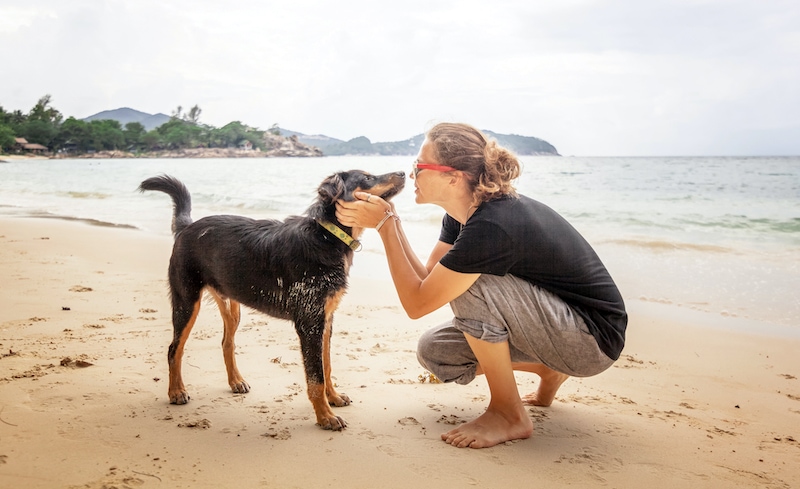
Still have questions about teaching your dog her name? Don’t worry – we’re here to help! Check out these common questions and answers below.
How long does it take a dog to learn her name?
The average dog will start to learn her name around the house quickly, often after just several days of consistent training. It can take weeks, months, or even years to achieve rock-solid responsiveness to her name in tough situations with hard distractions or large distances. Each canine is unique, and her breed, personality, and experience can play a role in how long it takes for a dog to learn her name.
Will a dog naturally learn her name?
A dog can learn her name naturally, but it will take longer than if you teach it to her intentionally. Dogs pick up on patterns, so she’s likely to put two and two together eventually. She’s also less likely to respond to her name when distracted or further away without the training to motivate her.
What is the easiest name for a dog to learn?
A dog can learn any name; it’s more about the training process than the name itself. However, most owners feel it’s easiest to call out a one syllable dog name or two-syllable name, as longer names can be harder to spit out.
How do you teach an older dog a new name?
The name training process outlined above works for pooches of any age, even older dogs. Make sure the space you train in has good traction so that she’s not slipping and sliding when chasing a tossed treat in the early stages of training. As a dog ages, hearing can diminish, so you may need to speak up when calling her name.
Can you change your dog’s name?
If you decide your pup needs a new moniker, you can switch it by following the training steps discussed in this article. Stop using her original name, which may be a hard change for you depending on how long she’s had it, and start teaching the new name. A dog doesn’t attach her name to her identity, like humans do, so changing her name won’t cause an existential crisis.
Life with a dog who readily responds to her name in a variety of circumstances is much more enjoyable. It’s well worth taking the time to teach her name in a fun, positive way so she wants to come when she hears it.
As she becomes very reliable in listening to her name, you can start rewarding her with treats intermittently and using other things she likes to reinforce her for coming over when you call. This might be playtime, pets, praise, clipping on the leash for a walk – anything that she finds pleasant and positive.
Are you starting from scratch with the name training process? Or does your dog respond to her name sometimes, but you’d like her to be more reliable?
Tell us about your experience and ask any questions in the comments below!


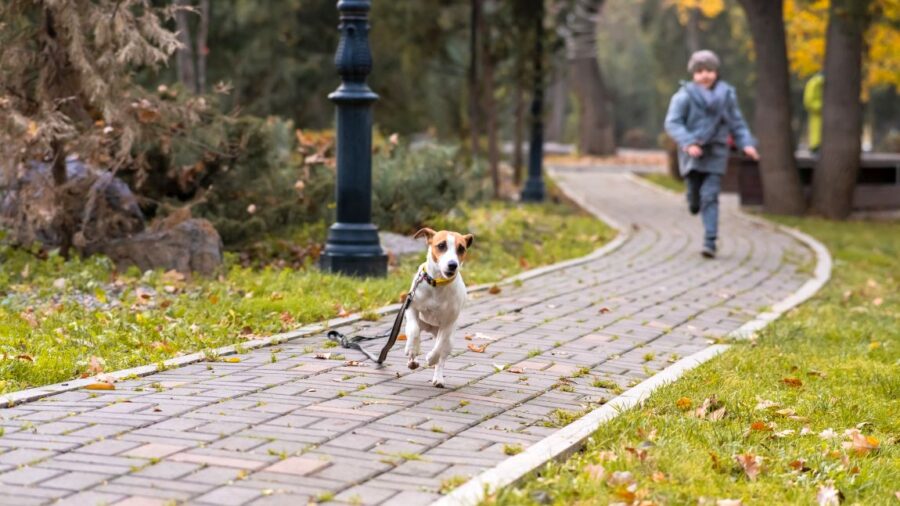



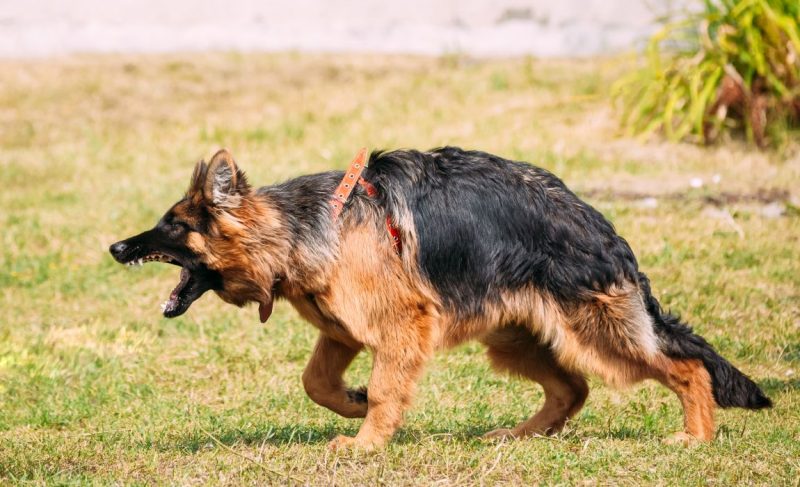
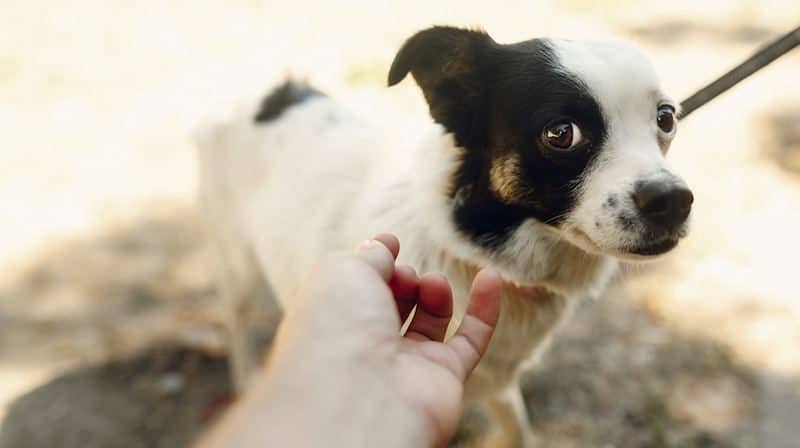
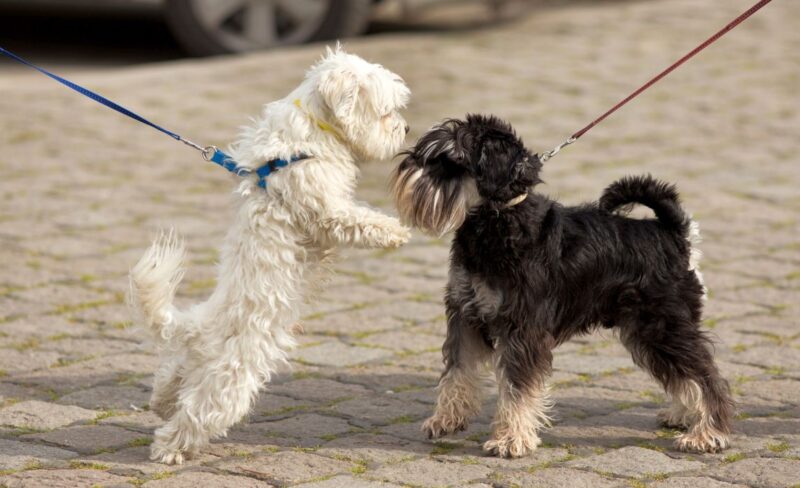
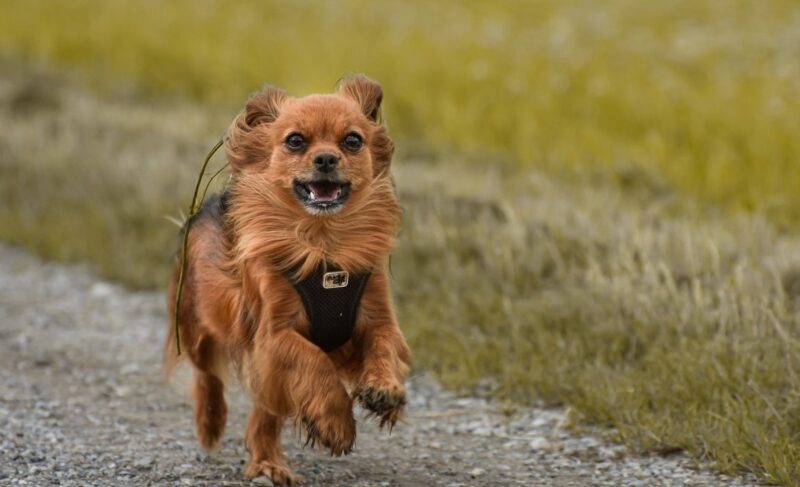
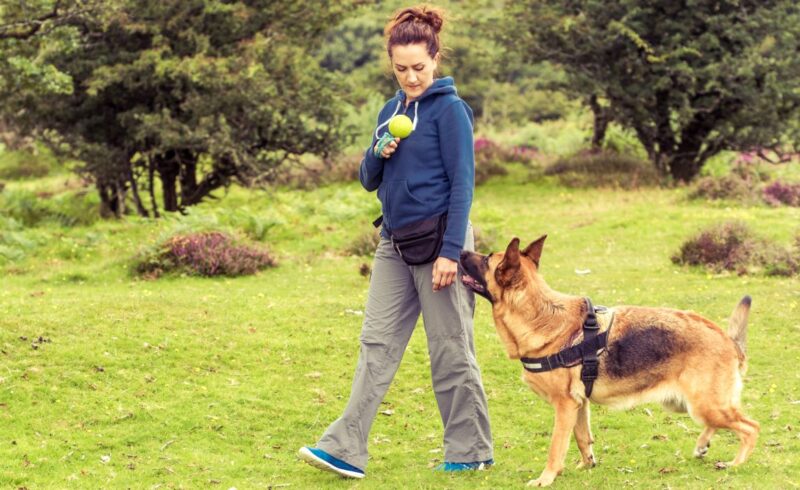
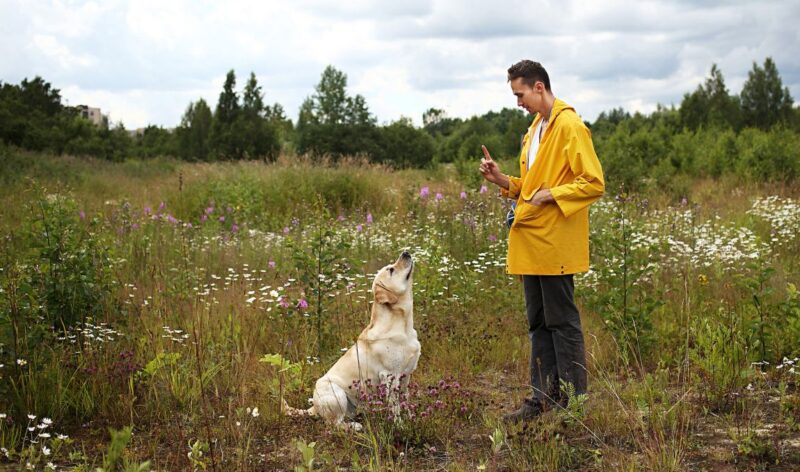

Leave a Comment